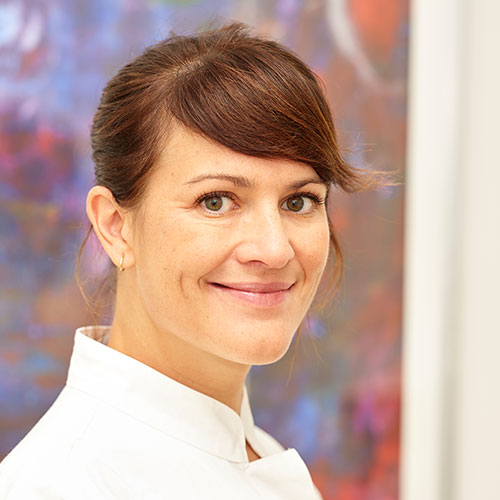Female puberty development
Puberty is a special phase of life in which girls develop into young women. It is characterized by physical changes such as growth and maturation of the sexual organs – but also by psycho-emotional changes.
How long does puberty last?
In girls, puberty usually begins around the age of 9. The brain sends out signals to stimulate the formation of sex hormones. These messenger substances are first produced by the adrenal glands. The hormones then ensure that the body changes gradually. Among other things, they cause the gonads – the ovaries in girls – to mature. The gonads later also take over the production of sex hormones and then release them into the blood in larger quantities.
Puberty ends in stages: most girls reach sexual maturity by the age of 14. Body growth in girls is usually completed by the age of 16. However, the last physical changes can last until the age of 20.
The breast development
The onset of breast growth is usually one of the first signs of the onset of puberty development.
Normally, breast development takes place between the ages of 9 and 13. Often the development of the breast bud is also asymmetrical or initially only one-sided, there is no need to worry here, as a rule, the breast size adjusts again as it grows.
The pubic and armpit hair
Pubic hair often appears after the start of breast growth, but it can also appear before or parallel to breast development. If pubic hair growth begins before the age of 8, clarification should be carried out.
The first hairiness in the armpit or the first smell of sweat are signs of increased hormone production (androgens). This usually happens at the age of 6-10 years. Other signs of androgen production can be oily hair and "pimples".
When does the growth spurt occur and when does the longitudinal growth end? The growth spurt usually follows the onset of breast development and before the first menstrual bleeding occurs. The "growth spurt" of the girls takes place about 1 year after the start of breast development.
The growth in length usually ends within 2 years after the onset of the first menstrual period. After the onset of the first menstrual period, a growth of approx. 6 cm can still be expected, whereby the age at the beginning of puberty and the familial/genetic component also play a role.
If the growth rate is 2 cm or less per year, then an end in length growth can be assumed.
The first menstrual period
The first menstrual period is to be expected as a sign of advanced puberty about 2 years after the start of breast development. The median age is currently 12.8 years.
Period bleeding lasts 2-7 days in 80-90% of girls. However, especially in the first 2 years, the duration, intensity and frequency of bleeding varies, this can be considered normal.
After 2 years, there is usually a regular cycle between 25-35 days. As soon as the menstrual period occurs, safe contraception should be considered.
Blemished skin
Many adolescents get blemished skin with pimples during puberty. Due to the hormonal imbalance, the skin can produce an oily substance called sebum. This clogs the pores and, in combination with dead skin cells, can lead to pimples.
In addition to local dermatological therapy options, a special "antiandrogenic" pill can also be considered in pronounced cases, which can compensate for the hormonal imbalance and thus have a positive effect on the skin.
Of course, we are always happy to answer any questions you may have about puberty.
